Countries that have faced Marburg virus outbreaks, such as Tanzania, Ghana, Equatorial Guinea, and Guinea, have employed several key strategies to contain the virus. These include the deployment of specialized surge teams trained to manage health emergencies and the activation of Emergency Operations Centres to coordinate efforts efficiently. Rapid response teams were mobilized to enhance surveillance, case management, and real-time assessments. Robust contact tracing and surveillance systems were implemented to break the chain of transmission, while specialized treatment centres provided intensive care and isolated infected patients, helping to prevent further spread. Collaboration with the WHO ensured timely access to necessary resources, including medical supplies and expert support. Read more in the New Times.
Rwanda enforces strict health measures to combat Marburg Virus spread
Across Rwanda, stringent health protocols are being implemented to curb the spread of the Marburg virus. Public spaces like churches, hospitals, and busy locations such as Nyabugogo taxi park now require individuals to sanitize their hands and undergo temperature checks before entry. If a person’s temperature exceeds 36°C, further evaluations are conducted. The Ministry of Health, supported by the Rwanda Governance Board, has mandated religious institutions to enforce strict hygiene measures, discouraging risky behaviors such as certain Holy Communion practices and funeral rituals for those who died from the virus. Public compliance with these guidelines, including voluntary handwashing and mask-wearing, is on the rise. Additionally, a trial vaccination drive was launched on October 6, prioritizing high-risk individuals like healthcare workers. Read more in the New Times.
Travel advice during Marburg Virus outbreak
With the ongoing outbreak of the Marburg virus in some regions, travelers need to be cautious and well-informed about the risks and the necessary precautions to ensure their safety. The World Health Organization (WHO), the U.S. Centers for Disease Control and Prevention (CDC), the European Centre for Disease Prevention and Control (ECDC), and the UK Foreign Office have all issued relevant advice to guide travelers in making safe decisions. Below is a summary of their recommendations and travel advice.
What is Marburg Virus?
Marburg virus is a highly contagious and deadly virus that causes Marburg Virus Disease (MVD), a hemorrhagic fever similar to Ebola. It is transmitted through direct contact with the bodily fluids of infected individuals, contaminated surfaces, or infected animals such as bats. The virus has a high fatality rate, and there is currently no specific treatment or vaccine.
Travel Recommendations
World Health Organization (WHO)
The WHO has not recommended any travel or trade restrictions with Rwanda or any other countries affected by the Marburg virus. However, the organization advises travelers to stay informed about the outbreak and take basic precautions to minimize the risk of exposure. WHO encourages all travelers to monitor official channels for updates on the outbreak and to follow local health authority guidance when in affected areas.
U.S. Centers for Disease Control and Prevention (CDC)
The CDC has issued a Level 2 travel notice for Rwanda, which means that travelers should practice enhanced precautions. Key recommendations include:
Avoiding contact with sick individuals who show symptoms consistent with Marburg Virus Disease (MVD), such as fever, vomiting, diarrhea, or unexplained bleeding.
Avoiding healthcare facilities in outbreak zones unless seeking urgent care.
Obtaining travel insurance that covers medical evacuation and treatment for infectious diseases before traveling.
Monitoring for symptoms of MVD for 21 days after leaving an outbreak area, such as fever, headache, muscle pain, rash, vomiting, or unexplained bleeding. In case of symptoms, travelers should immediately isolate and seek medical care.
CDC also advises travelers to stay updated on the outbreak and prepare for potential changes in travel conditions or advisories.
European Centre for Disease Prevention and Control (ECDC)
The ECDC emphasizes the importance of travelers being aware of the ongoing Marburg outbreak and following the guidance of local health authorities. Their key recommendations include:
Avoiding contact with individuals showing MVD symptoms and steering clear of healthcare facilities in affected areas for non-urgent medical reasons.
Avoiding wildlife habitats such as caves or mines that may be inhabited by bats, and refraining from handling or consuming bushmeat.
Reporting symptoms upon return from affected areas. Travelers returning to the EU/EEA should promptly seek medical attention if they develop symptoms consistent with MVD and disclose their travel history to healthcare providers.
UK Foreign Office
The UK Foreign Office has not yet advised against travel to Rwanda, but it acknowledges the outbreak on its website and urges travelers to consult local authorities before traveling. Organizations that send workers to affected areas are encouraged to register with the UK Health Security Agency (UKHSA) Returning Workers Scheme. This allows returning workers to be monitored for potential symptoms of MVD.
General Precautions for Travelers
Travelers heading to regions affected by the Marburg virus should consider the following precautions:
Avoid close contact with sick individuals, especially those showing symptoms such as fever, vomiting, diarrhea, or unexplained bleeding.
Steer clear of healthcare facilities in affected areas unless necessary.
Avoid high-risk activities such as visiting bat-inhabited caves or handling wildlife, particularly primates, bats, and bushmeat.
Monitor for symptoms for 21 days after leaving the outbreak area and seek immediate medical attention if symptoms develop.
Stay informed through reliable sources like the WHO, US CDC, Africa CDC, ECDC, and local health authorities about any changes in the outbreak and travel advisories.
Conclusion
While the Marburg virus outbreak poses serious health risks, taking proper precautions can significantly reduce the chances of exposure and infection. Travelers to affected areas should stay informed, avoid risky behaviors, and be prepared for potential changes in travel restrictions. By following the guidance of health organizations like WHO, CDC, ECDC, and the UK Foreign Office, travelers can protect themselves and prevent further spread of the virus.
References:
World Health Organization (WHO). Marburg Virus (https://www.who.int/news-room/fact-sheets/detail/marburg-virus-disease )
U.S. Centers for Disease Control and Prevention (CDC). Marburg Virus Travel Notice (https://wwwnc.cdc.gov/travel/notices/level2/marburg-rwanda )
European Centre for Disease Prevention and Control (ECDC). Marburg Virus Disease (https://www.ecdc.europa.eu/en/marburg-virus-disease )
UK Foreign Office. Foreign Travel Advice (https://www.gov.uk/foreign-travel-advice/rwanda/health )
Tracing the history of Marburg Virus: Key outbreaks and global impact
Marburg virus disease was first recognized in 1967 during simultaneous outbreaks in Germany and Yugoslavia, linked to African green monkeys from Uganda. Since then, outbreaks have occurred mainly in Africa, with cases in Ghana, Guinea, and Uganda, among others. The disease is highly fatal, with recent outbreaks (before the current in Rwanda) in Tanzania and Equatorial Guinea in 2023. Key historical outbreaks include Angola (2004-2005) and the Democratic Republic of Congo (1998-2000), which had some of the highest fatality rates. Read more on this link
Strengthening Risk Communication and the Participation of Civil Society Organizations in Pandemic Preparedness – The Case of ECOWAS and EAC (GIZ)
In the face of recurring health crises and outbreaks of infectious diseases such as Ebola, malaria, yellow fever, and COVID-19, GIZ programmes across Regional Economic Communities (RECs) in Africa, together with their partners, are constantly engaging and co-creating collaborative and coordinated Pandemic Preparedness and One Health approaches to disease management.
Aligning with these efforts, in June 2024, the GIZ Regional Programme, Support for Pandemic Prevention in the Economic Community of West African States (ECOWAS), invited the joint East African Community (EAC) and GIZ Pandemic Preparedness programme to a stakeholder workshop hosted by the West African Health Organization in Banjul, Gambia. The meeting aimed to develop collaborative mechanisms for the effective engagement of Civil Society Organizations (CSOs) and community leaders in epidemic preparedness, with a particular focus on Risk Communication and Community Engagement (RCCE).
Read more
El Niño Rains Cause Devastation in Eastern Africa
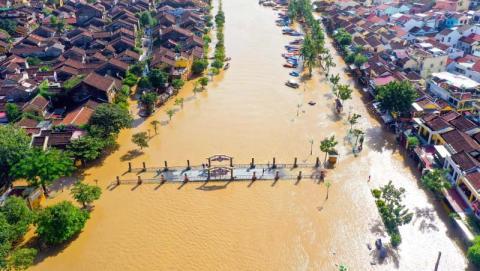
Between March and May 2024, Eastern Africa experienced devastating heavy rains and widespread flooding, driven by El Niño. Known as the Long Rains, this period caused landslides, mudslides, and severe damage across the region. The effects were particularly harsh on women and children, who lost lives, homes, and farmland. Agriculture, an industry where women play a crucial role, was severely impacted.
Women, often the primary caregivers, were especially affected. Their responsibilities for securing water, food, and healthcare for families became more difficult with the destruction of homes and displacement. Many women were forced into temporary shelters, where they faced increased risks of gender-based violence, including harassment and abuse.
The floods also triggered major public health crises, with clean water and sanitation systems compromised. Diseases such as malaria, cholera, and measles surged, posing serious health risks to pregnant women and children. Access to healthcare services became increasingly limited, further worsening maternal health issues.
To address health concerns during floods, the World Health Organization (WHO) recommends several protective measures. Communities need to be aware of evacuation routes and warning signals, with women, children, and people with disabilities given priority. Ensuring the availability of clean drinking water is critical, particularly for women responsible for water collection and food preparation. Good hygienic practices and safe food preparation techniques are essential to reduce the risk of disease outbreaks, while avoiding flooded areas and using mosquito repellents help minimize exposure to hazards like drowning or mosquito-borne diseases, including malaria.
Looking ahead, proactive measures are vital to reduce the impact of future disasters, which are becoming more frequent due to climate change. Monitoring weather forecasts can help communities prepare, particularly women, who often lack access to timely information. Safe shelters and preparedness kits with essential supplies, such as flashlights, cash, and first aid, can empower women to protect their families. Investments in infrastructure, agriculture, clean water, healthcare, and emergency systems are necessary to build resilience. Designing buildings to withstand extreme weather and relocating from flood-prone areas can offer additional protection, especially for women who manage household resources.
By prioritizing gender-sensitive responses and addressing the specific needs of women and vulnerable groups, Eastern Africa can better prepare for future natural disasters, fostering more resilient and inclusive communities. More details on this Link
Globalization poses public health challenges in trade
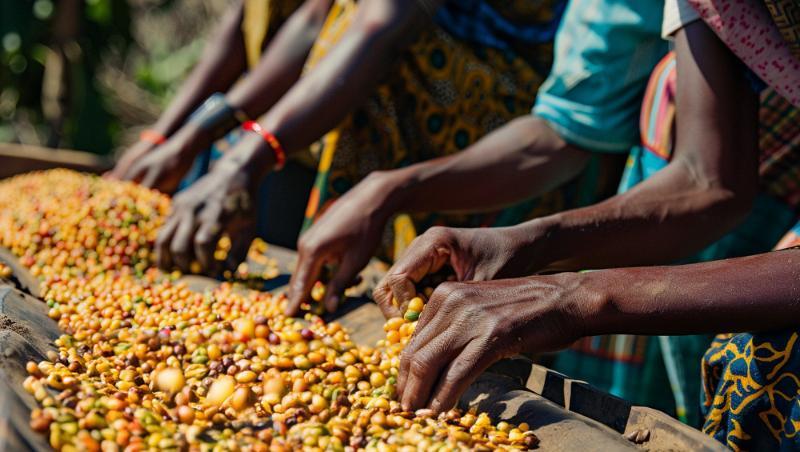
It is vital that public health professionals engage with issues concerning trade organisations and treaties.
The world is getting smaller. Increased globalisation, resulting from advances in travel and telecommunications, has facilitated an ever greater mixing of people, customs and cultures, and more rapid cross border flows of goods and services, people and capital, and ideas and information. For some this heralds increasing standards of living—including health—for all. For others it brings greater exploitation of poor countries, adverse impacts on health, and the destruction of indigenous cultures. But why should this concern those working in public health? Read more in an article in the Journal of Epidemiology and Public Health on this Link
How pandemic preparedness let Tanzania successfully control a Marburg outbreak
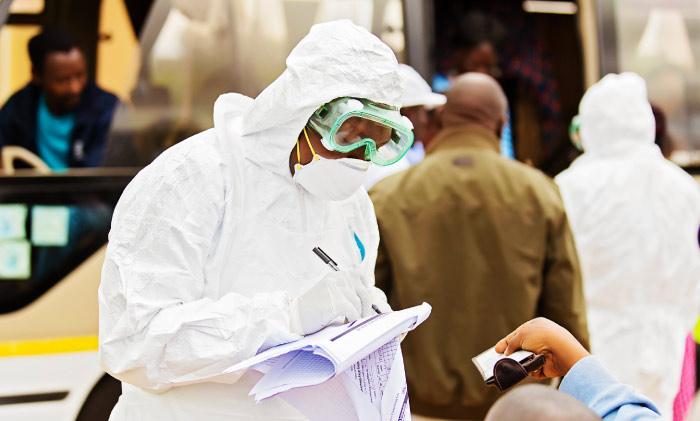
Over recent years, member states of the East African Community have strengthened their pandemic preparedness in cooperation with German technical and financial cooperation, provided by Deutsche Gesellschaft für Internationale Zusammenarbeit (GIZ) and by KfW Development Bank, both working on behalf of the German government.Is pandemic preparedness work paying off for East African countries? The successful containment of a recent Marburg outbreak in Tanzania suggests the answer is yes.
Tanzania develops contingency plan as region braces for El Niño
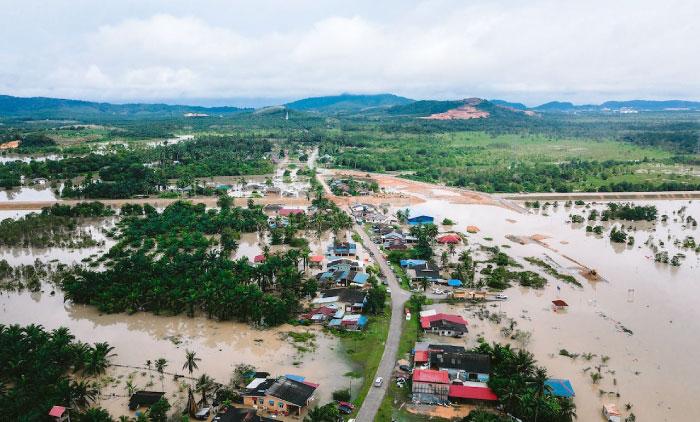
Dar es Salaam, September 15, 2023 - As the East African region braces for the looming threat of El Niño during the upcoming October-November-December (OND) season, Tanzania has taken proactive steps to protect its citizens and mitigate potential damage. The Kenya-based IGAD Climate Prediction and Applications Centre (ICPAC) recently issued a report warning of the likelihood of an El Niño event, prompting the Tanzanian government to develop the National El Niño Contingency Plan and Anticipatory Actions (CP&AA) for Tanzania Mainland, which will be in effect from September 2023 to June 2024.
Tanzania is one of the countries at risk of severe weather events, including floods, droughts, and strong winds, across various regions of the nation. The impact of these events has been exacerbated by factors such as climate change, population growth, urbanization, and increased human activity in disaster-prone areas. These hazards have resulted in loss of life, injuries, infrastructure damage, and disruption of socioeconomic activities.
The Tanzania Meteorological Authority (TMA) has provided forecasts indicating that the upcoming Vuli rainfall season from October to December 2023 is likely to be influenced by El Niño conditions. El Niño is typically associated with above-normal rainfall over most affected regions. While this may be welcomed in some areas, the excess rainfall can also lead to disruptions in sectors vital to Tanzania's economy, including agriculture, livestock, fisheries, tourism, wildlife, transport, energy, water, minerals, health, and various other socioeconomic activities.
To address these potential challenges, the Prime Minister's Office (Policy, Parliament, and Coordination) has taken the lead in coordinating the development of the National El Niño Contingency Plan and Anticipatory Actions (CP&AA). This comprehensive plan has been created through a multisectoral approach, engaging experts and stakeholders from both government and non-government institutions. The Disaster Management Act No. 6 of 2022 has played a pivotal role in facilitating this process, providing a framework for coordinating various sectors through disaster management committees at both the national and local levels.
The CP&AA focuses on ensuring that the government, non-government organizations, communities, and other stakeholders are prepared to prevent and mitigate the impacts of hazards. It emphasizes readiness for response and recovery, with a commitment to building back better after any adverse events. The plan's objectives include establishing and strengthening coordination mechanisms and partnerships, proactive containment of El Niño impacts, and addressing the most vulnerable communities. It also delineates institutional roles and responsibilities and outlines key processes needed for a coordinated, coherent, and consistent management of El Niño-related issues across sectors.
The development of this plan has benefited from the valuable input of experts from government and non-government institutions involved in humanitarian and disaster risk management. Its full implementation is expected to significantly contribute to the prevention of expected losses and damages resulting from the impact of El Niño.
In light of the imminent threat, stakeholders are urged to take their responsibilities outlined in the plan seriously, in addition to sector-specific initiatives aimed at mitigating the negative effects of El Niño. By working together and remaining vigilant, Tanzania is well-prepared to weather the challenges that El Niño may bring, safeguarding its people and its economy.
Cautious hope as forecast shows good rainy season in the region
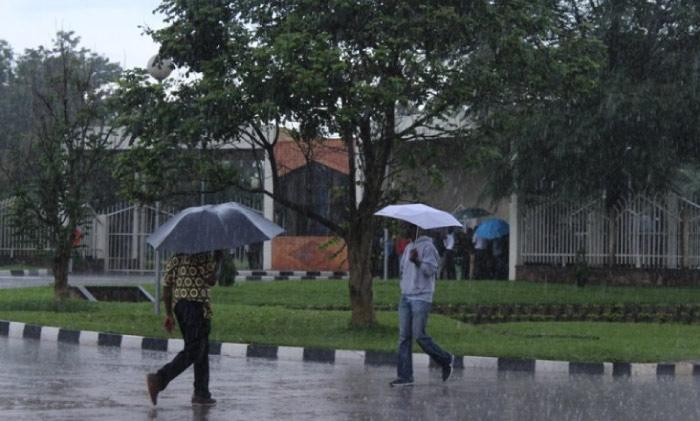
East African Community Headquarters, Arusha, Tanzania, 25th March 2022: The EAC Secretariat urges Partner States to take appropriate steps to ensure maximum benefit from farming as the region is expected to receive normal rains over the next few months after almost two years of persistent drought in some EAC areas. This comes after the Climate Prediction and Applications Centre (ICPAC) of the Intergovernmental Authority on Development has predicted normal rains over East Africa from March to May
“This is good news for the region, though the situation might differ from country to country. Expert guidance is important so that farmers are not over optimistic in case the rains end earlier than usual, but also that the opportunity is not lost,” says Hon Christophe Bazivamo, EAC Deputy Secretary General, Productive and Social Sectors.
The March to May season constitutes an important rainfall season, particularly in the equatorial parts of the region where it contributes up to 70% of the total annual rainfall, according to ICPAC. The rainfall is good for crop and livestock farming if it is not excessive.
The EAC Secretariat urges farmers to plant enough food crops and livestock keepers to plant pastures which can be harvested and stored for feeding of livestock during the dry season. The Secretariat also encourages Partner States to invest more seriously in irrigation and encourages farmers to adopt technologies for water harvesting and storage as well as irrigation systems to increase crop production and productivity during the dry season. Partner States might also consider constructing irrigation systems to bring water from areas which often see flooding to dry but fertile areas to make more arable land available.
As the EAC region begins to recover from the impacts of drought, farmers, agricultural extension workers, and other agricultural value chain actors are encouraged to follow the weather forecasts from the national meteorology departments and agencies and the Ministries in charge of Agriculture and Livestock and to refer to ICPAC’s weekly and monthly weather forecasts. The meteorology departments and agencies are encouraged to publish weather information in a timely manner. They should collaborate with other government departments and agencies such as public health, animal health, environmental health to facilitate timely risk communication and preparing for outbreaks of infectious diseases of public and animal health significance.
According to ICPAC, the southern, central and northern Tanzania, eastern Uganda, northern Burundi, eastern Rwanda, southern and western Kenya, and eastern South Sudan might receive above normal rains this time of the year which might result in flush floods and increased mosquito populations. The EAC Secretariat cautions that this might increase the risk of outbreaks of infectious diseases transmitted by mosquitos such as malaria for humans and Rift Valley Fever for animals which can be transmitted from livestock to humans. The risk of outbreaks of other diseases such as Cholera may increase with the occurrence of flush floods. The public is advised to put in place appropriate measures to minimise infection of people and livestock with mosquito-borne diseases.
For more information, please contact:
Simon Peter Owaka
Senior Public Relations Officer
Corporate Communications and Public Affairs Department
EAC Secretariat
Arusha, Tanzania
Tel: +255 768 552087
Email: sowaka [at] eachq.org
